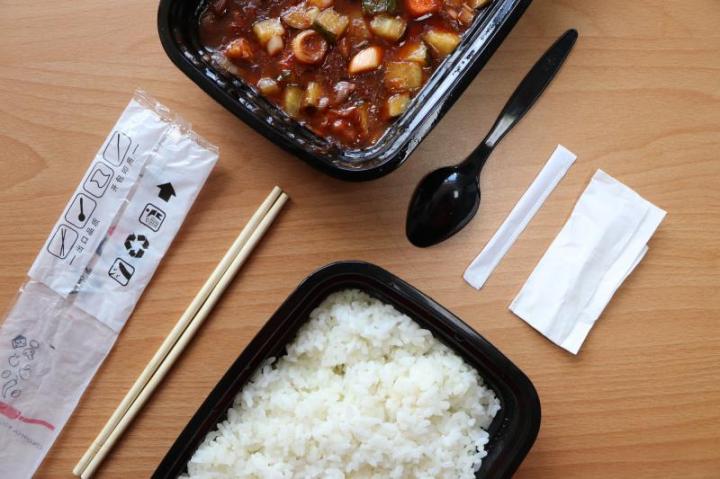
Credit: Zhou et al
Lifestyles in China are changing rapidly, and ordering food online is an example. However, those billions of delivery meals produce an enormous amount of plastic waste from packaging, but also from food containers and cutlery; in one year, some 7.3 billion sets of single-use tableware accompany the food. Around one-third of the 553 kilotons of municipal solid waste that is generated each day comes from packaging. That is why a group of scientists analysed whether using paper alternatives or reusable tableware could reduce plastic waste and associated life cycle emissions.
Alternatives
Ya Zhou (associate professor at Guangdong University of Technology) and Yuli Shan are the first authors of this paper. Yuli Shan, Dabo Guan (Professor at Tsinghua University) and Yanpeng Cai (Professor at Guangdong University of Technology) are the corresponding authors.
‘We quantified the environmental impact and modelled different alternatives,’ explains Shan. The alternatives to the single-use plastic tableware were single-use paper alternatives and reusable silicone tableware that is cleaned either by the restaurants that cook the food or in a central cleaning facility.
Paper substitution
Paper may sound like a good alternative since it can be degraded, but single-use polyethylene-coated paper containers and bags actually increased emissions and total waste volume. ‘For those areas without paper waste collection and recycling systems, paper substitution is not the optimal option for addressing the takeaway packaging waste dilemma,’ says Zhou. Reusable silicon tableware reduced plastic waste by up to 92 per cent, and environmental emissions (carbon, sulfur and nitrogen dioxides, small particulate matter, dioxins) and chemical oxygen demand) and water consumption by more than two-thirds.
Getting an environmentally friendly and, at the same time, safe system of reusable tableware up and running requires some investments. ‘A central cleaning facility would be best, also for health inspections to ensure safety, but this requires a system for collecting the used sets.’ That is not easy but also not impossible: ‘However, it does need a government effort to realize this.’
Zero waste
The Chinese government is taking steps to drastically reduce waste, as the Nature Food paper explains. A number of initiatives have sought new solutions for municipal solid waste management and plastic reduction, including a sorting implementation plan, a ‘zero-waste city’ pilot programme that started last year and a nationwide single-use plastic ban as from January 2020.
Would it not be easier to deliver the food without tableware? It may be possible in some cases, but not for all takeaway orders, according to Shan: ‘Most meals are not eaten at home but in the classroom, during lunch breaks or at the office, when employees work late.’ Zhou added that ‘reusing tableware provides a potential solution to reduce waste and emissions from takeaway meals and a new strategy for promoting sustainable and “zero-waste” lifestyles’.
###
Reference: Ya Zhou, Yuli Shan, Dabo Guan, Xi Liang, Yanpeng Cai, Jingru Liu, Wei Xie, Jinjun Xue, Zhuguo Ma & Zhifeng Yang: Sharing tableware reduces waste generation, emissions and water consumption in China’s takeaway packaging waste dilemma. Nature Food, 15 September 2020
Media Contact
Rene Fransen
[email protected]
Original Source
https:/
Related Journal Article
http://dx.




